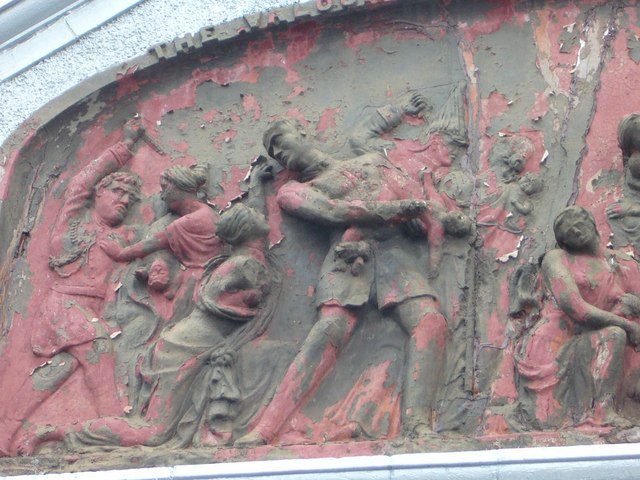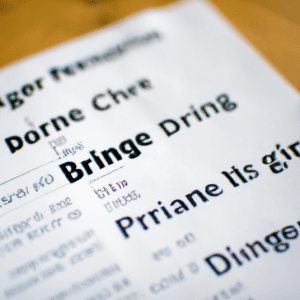Germany is a country known for its rich cultural heritage, captivating traditions, and remarkable diversity. With a history that spans centuries, Germany has successfully preserved its unique customs while embracing the increasingly cosmopolitan world we live in. From the enchanting Christmas markets to the famed Oktoberfest celebrations, this article delves into the vibrant tapestry of German culture, offering an insightful exploration into the fascinating interplay between diversity and traditions that define this European nation. Whether you are fascinated by the regional variations in language, cuisine, or customs, or simply intrigued by the country’s unwavering commitment to preserving its cultural identity, join us as we embark on a journey of discovery through the captivating landscape of “Exploring German Culture: Diversity & Traditions”.
The Influence of Regional Diversity on German Culture
The cultural landscape of Germany is rich and diverse, shaped by the influences of its various regions. Each region within the country has its own distinct traditions, dialects, and customs, contributing to the vibrant tapestry of German culture as a whole.
One of the key ways in which regional diversity influences German culture is through its cuisine. Each region boasts unique dishes and culinary specialties that are deeply rooted in its history and local ingredients. From the hearty and savory flavors of Bavarian cuisine, including traditional favorites like pretzels, sausages, and sauerkraut, to the delicate and aromatic dishes of the Rhine region, such as spätzle and wine-soaked dishes, the regional diversity of German cuisine showcases the country’s rich gastronomic heritage.
Another aspect influenced by regional diversity is the architecture and art scene throughout Germany. Each region has its own distinctive architectural styles, influenced by historical events and cultural movements. Marvel at the half-timbered houses in the picturesque villages of the Black Forest or the impressive Gothic cathedrals in cities like Cologne and Frankfurt. German art museums also showcase a wide range of styles and influences, from the contemporary art scene in Berlin to the expressionist works in Munich.
Finally, regional diversity can also be observed in the various festivals and celebrations that take place throughout the year. From the world-famous Oktoberfest in Bavaria, where millions of people gather to celebrate Bavarian culture, to the colorful and lively Karneval season in Cologne, each region has its own unique traditions and festivities. These events not only preserve local customs but also provide a platform for cultural exchange and appreciation.
The regional diversity of Germany is a testament to the country’s rich history and the importance of embracing and celebrating cultural differences. By exploring the unique traditions, cuisine, architecture, and festivities of each region, one can truly appreciate the impact of regional diversity on German culture as a whole.
Traditional Festivals: A Celebration of German Heritage
Germany’s rich cultural heritage is beautifully reflected in its traditional festivals that are celebrated throughout the year. These vibrant and captivating festivities provide a glimpse into the country’s history, customs, and traditions. Whether you’re an eager traveler or a local resident, these events offer a unique opportunity to immerse yourself in the captivating world of German heritage.
One such enchanting festival is Oktoberfest, which needs no introduction. Held annually in Munich, this world-renowned event attracts millions of visitors from all corners of the globe. Delight in the spectacle of colorful traditional attire, ornate floats, lively music, and, of course, the undeniable star of the show – beer! Witness the tapping of the first keg, indulge in mouthwatering Bavarian specialties, and join in the contagious merriment under the iconic tents.
Another festival that showcases the essence of German heritage is the famous Karneval, known as the “Fifth Season” in some regions. Rooted in medieval traditions, this lively carnival involves parades, street parties, and an abundance of whimsical masquerade costumes. Embrace the infectious energy as the streets come alive with laughter, music, and dance. From Cologne to Düsseldorf, every city leaves its distinctive mark on this cherished celebration.
Bringing communities together in a heartfelt expression of unity and tradition, the Maypole Festival is a beloved event steeped in history. Each May, towns and villages across Germany erect tall, elaborately decorated maypoles amidst joyous festivities. Experience the thrill of watching the maypole being raised while indulging in delicious regional delicacies and engaging in traditional dance and song. This festive tradition is a true testament to the tight-knit communities and enduring cultural values cherished by the German people.
Cuisine: Exploring the Flavors of Germany
When it comes to culinary delights, Germany is a treasure trove of flavors that are sure to tantalize your taste buds. From hearty sausages to mouthwatering pastries, German cuisine offers a diverse range of dishes that showcase the country’s rich culinary traditions and regional specialties.
One of the most iconic dishes in Germany is the Bratwurst, a juicy sausage made from finely minced pork, beef, or veal. Served with sauerkraut, mustard, and a freshly baked pretzel, it is a favorite among locals and tourists alike. Another must-try is the Schnitzel, a breaded and fried meat cutlet, usually made from pork or veal. It is often accompanied by a traditional German potato salad or spaetzle, a type of soft egg noodle.
No visit to Germany is complete without indulging in the country’s famous baked goods. From Black Forest cake to apple strudel, German pastries are world-renowned for their delectable flavors and intricate preparations. Be sure to try the pretzels, too, which come in various shapes and sizes, and are often served with butter or mustard.
Germany’s culinary offerings are not limited to meat and pastries. The country also boasts a vibrant vegetarian and vegan food scene. You can find a wide variety of delicious meat-free dishes, such as käsespätzle (cheese noodles), potato pancakes, and a wide variety of fresh salads. German cuisine truly offers something for everyone, no matter your dietary preferences.
The Role of Arts and Literature in German Culture
The vibrant German arts and literature scene plays an integral role in shaping the cultural identity of this diverse nation. From the masterpieces of Johann Wolfgang von Goethe to the avant-garde experimentation of contemporary artists, Germany has fostered a rich artistic heritage that continues to captivate audiences worldwide.
1. Literature:
- German literature has a storied history, with influential authors like Thomas Mann, Hermann Hesse, and Franz Kafka contributing to its artistic legacy.
- Works like Goethe’s “Faust” and Mann’s “Buddenbrooks” are considered national treasures, exploring themes of existentialism, societal change, and the human condition.
- German literature embraces a wide range of genres, from the profound and philosophical to light-hearted and humorous tales.
2. Fine Arts:
- The German art world boasts a rich tapestry of renowned painters, sculptors, and architects who have left an indelible mark on history.
- From the works of Albrecht Dürer and Caspar David Friedrich during the Renaissance and Romanticism periods respectively, to the groundbreaking expressionism of Kathe Kollwitz and Ernst Ludwig Kirchner, German artists have consistently pushed boundaries and challenged artistic norms.
- Germany is also home to world-class art institutions such as the Pinakothek museums in Munich and the Gemäldegalerie in Berlin, providing spaces for the exhibition and preservation of artistic treasures.
3. Performing Arts:
- The German love for performing arts is evident in its opera houses, theaters, and dance companies that grace cities across the nation.
- From the exceptional performances at the iconic Bayreuth Festival dedicated to Richard Wagner’s work, to the renowned Schaubühne theater in Berlin, Germany offers a wealth of diverse artistic experiences.
- German theater is celebrated for its avant-garde approach, experimental techniques, and thought-provoking productions that push the boundaries of traditional storytelling.
Through a profound appreciation and support for arts and literature, Germany’s cultural fabric is woven with a deep understanding of history, identity, and artistic expression. The artistic contributions of generations past and present continue to shape and inspire a nation known for its cultural richness.
German Hospitality: Customs and Etiquette for Visitors
When visiting Germany, it is important to familiarize yourself with the customs and etiquette unique to this country. Germans take pride in their hospitality and it is essential to respect and adhere to their cultural practices. Here are a few tips to ensure a pleasant and respectful experience:
- Punctuality: Germans value punctuality and being on time is considered a sign of respect. Whether you are attending a business meeting or meeting friends for dinner, it is crucial to arrive on time or a few minutes early. This demonstrates your commitment and professionalism.
- Greetings: A firm handshake and direct eye contact are standard when greeting someone in Germany. When entering a room, it is customary to greet everyone individually, including children. Germans appreciate a friendly “Guten Tag” (Good day) or “Hallo” (Hello).
- Formality: Germans have a formal approach to social interactions, so it is common to address people by their title and last name until invited to use their first name. Using “Herr” (Mr.) or “Frau” (Ms.) followed by the person’s last name shows respect and politeness.
- Table Manners: When dining with Germans, remember to keep your hands visible on the table. It is impolite to rest your elbows on the table. Additionally, wait until the host says “Guten Appetit” before beginning to eat. After finishing a meal, it is customary to place your knife and fork parallel to each other on the plate, with the handles facing right.
By embracing these customs and adhering to the German etiquette, you will not only gain a deeper appreciation for the culture but also create meaningful connections with locals. Enjoy your visit to Germany and embrace the warm hospitality that awaits you!
Insider Tips: Must-Visit Cultural Sites in Germany
Germany is a treasure trove of cultural sites that every traveler should explore. From grand palaces to ancient cathedrals, here are some insider tips on must-visit cultural sites that will captivate your senses and leave you in awe.
1. ***Neuschwanstein Castle***: Nestled in the picturesque Bavarian Alps, this fairytale-like castle is a true marvel. Built in the 19th century, it is the epitome of Romantic architecture and inspired Walt Disney’s Sleeping Beauty castle. Take a guided tour to discover its opulent interior, elaborate murals, and breathtaking views of the surrounding landscapes.
2. ***Cologne Cathedral***: Standing tall since the Middle Ages, Cologne Cathedral is an extraordinary example of Gothic architecture. Its intricate facade, adorned with delicate stone carvings, is a sight to behold. Explore the interiors and marvel at the stunning stained glass windows that cast colorful reflections inside. Don’t forget to climb the 533 steps to the top for panoramic views of the city.
3. ***Museum Island, Berlin***: For history and art enthusiasts, a visit to Museum Island is a must. This UNESCO World Heritage site houses five world-renowned museums. Explore the Neues Museum to see the iconic bust of Nefertiti, admire ancient Greek and Roman sculptures at the Altes Museum, or delve into European art at the Pergamon Museum. With its diverse collection, Museum Island is a cultural paradise.
4. ***Rothenburg ob der Tauber***: Step back in time as you wander through the medieval streets of Rothenburg ob der Tauber. This charming town boasts well-preserved half-timbered houses, cobbled lanes, and a majestic city wall. Climb up to the top of the Town Hall tower for panoramic views or visit the Medieval Crime and Justice Museum to learn about the justice system of the past. Don’t miss the enchanting Christmas market that transforms the town into a winter wonderland during the holiday season.
Germany’s cultural sites offer a fascinating glimpse into its rich heritage and history. Whether you’re a history buff or simply seeking awe-inspiring experiences, these insider tips will guide you to some of the most remarkable cultural sites that Germany has to offer. Immerse yourself in the architectural splendor, artistic treasures, and centuries-old traditions that make Germany a truly unforgettable destination.
Wrapping Up
In conclusion, exploring German culture reveals a rich tapestry of diversity and traditions that have shaped the nation’s identity. From the vibrant and cosmopolitan cities to the serene countryside, Germany offers a multitude of experiences for both locals and visitors alike. The blending of old and new, traditional and modern, is evident in everyday life, with Germans taking great pride in their heritage while embracing and accommodating the influences of multiculturalism. Whether it’s savoring the flavors of regional cuisine, immersing oneself in the arts and music scene, or participating in traditional celebrations, the German culture provides a fascinating glimpse into the heart of a culturally diverse and progressive nation. By delving into its history, language, and customs, one can truly appreciate the multifaceted nature of German society, ensuring a deeper understanding of this captivating culture.





